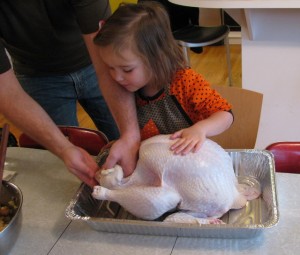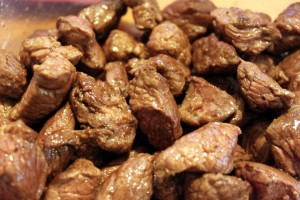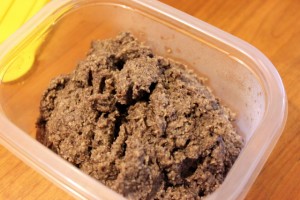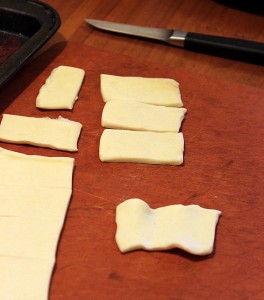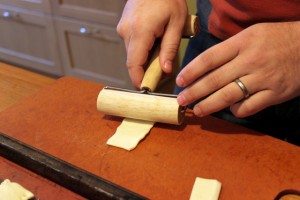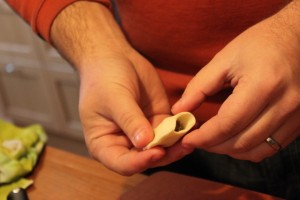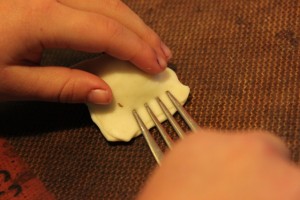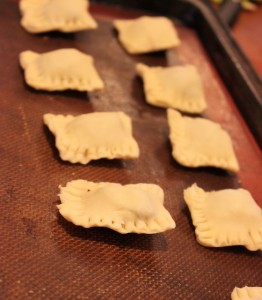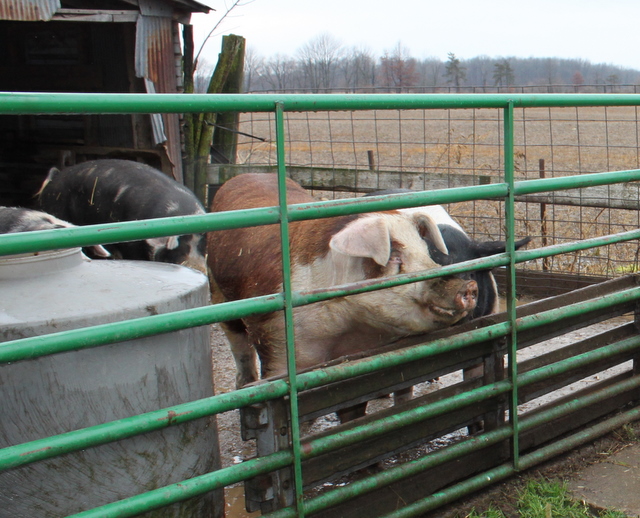 Salt is the saline taste humans crave and would perish without. It's also the rock that allows us to preserve foods for long term storage.
Salt is the saline taste humans crave and would perish without. It's also the rock that allows us to preserve foods for long term storage.
The February Charcutepalooza challenge was the salt cure. As we have cured pork belly into bacon and pancetta at least a dozen times , I thought it would be most interesting to share our oldest and most recent cured edibles, both simple salt-only cures.
The Old
A month after Alex received Ruhlman's Charcuterie in 2009, lemons came into season. Salting them into lemon confit is a perfect gateway to meat charcuterie and that's precisely what he did.
Now aged over 2 years in a jar in the back of a cupboard, this confit is not winning any beauty pageants. The texture has disintegrated the previously tough rinds into soft bits that will mash into paste with the slightest effort.
In dressing, sauces, or marinated kale salad, just a quarter teaspoon of rinsed, minced or pasted lemon confit adds strong savory and tangy flavors. It is unlike fresh lemon or salt; instead it's an enriched strengthened combination of the two.
The New
As seasoned charcutiers, we are now true believers in the power of salt. We successfully cured salmon, cod, and pork for our refrigerator-less back country canoe trip this summer, adding meat protein to meals seven days into the trip. With practice, we have become familiar enough to alter recipes and create our own versions like the cider bacon posted last week.
Our latest salt cured project is almost as simple as the lemons, yet more exotic. We salt cured, then water rinsed, and finally air dried tuna. This traditional treatment for tuna in Portugal, Spain, and Italy is called mochama, mojama, and mosciame, respectively. We followed the method on playing with fire and ice.
Again, the final product is unlike fresh tuna. It is rich like jerky yet only subtly salty because of the rinsing. Thus far we have only tasted it raw in paper thin slices but I sense the flavor would be perfect for topping an asian style noodle soup, in a thin layer on a breakfast sandwich with eggs, or as part of a charcuterie plate.
The Future
We fully understand and have practiced the usefulness of salt in curing meat for consumption. We are just beginning to experiment with using it for other purposes. Our refrigerator currently contains one of Speckles the chicken's feet in salt to dehydrate and preserve it for display around Halloween. We plan to salt cure the hide of the next squirrel that crosses Alex's path. And of course we look forward to using salt in future Charcutepalooza challenges.
Added to Hearth and Soul Volume 35.





 . You can also follow the
. You can also follow the 

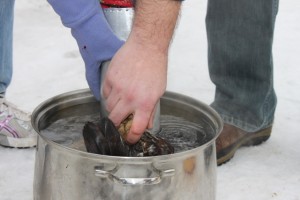
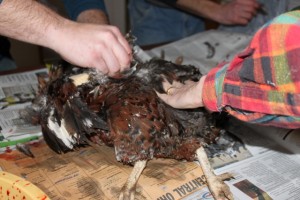


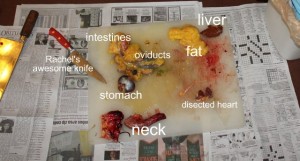


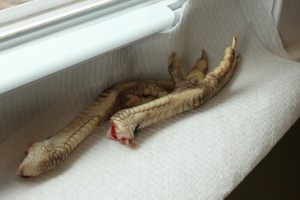

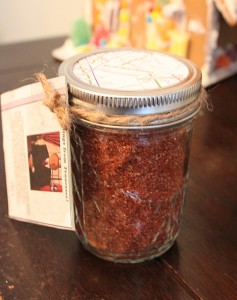
 fills one half pint jar
fills one half pint jar